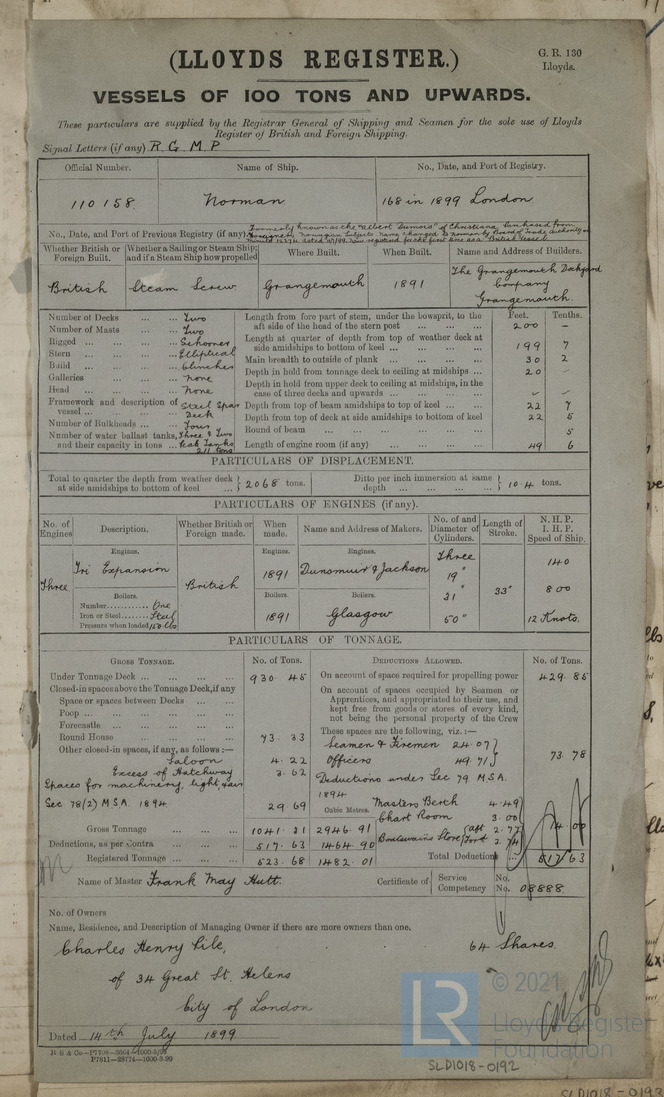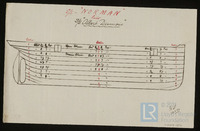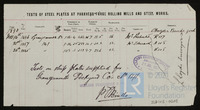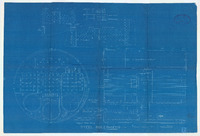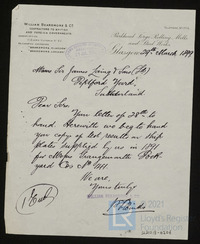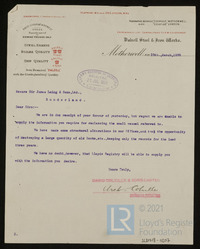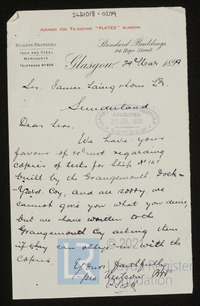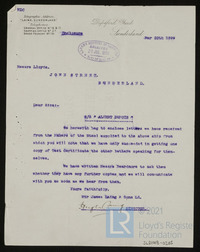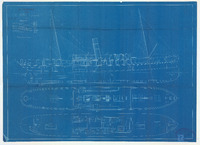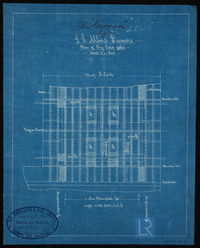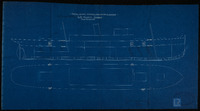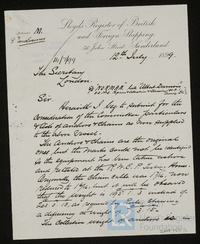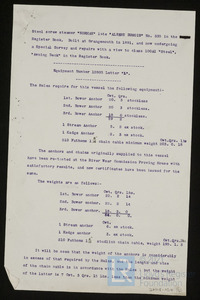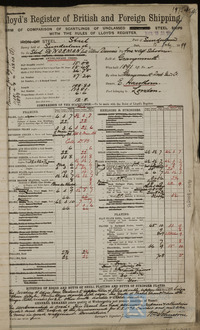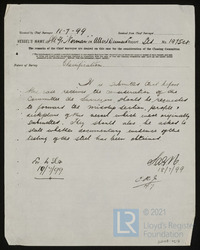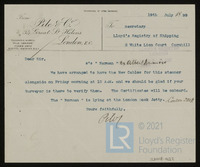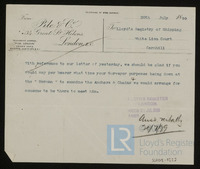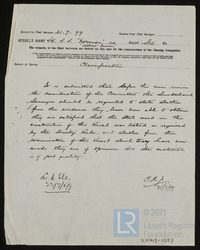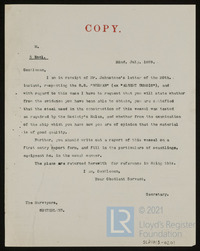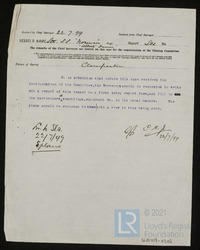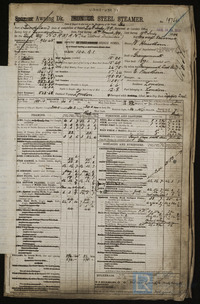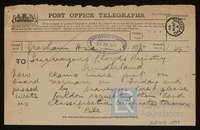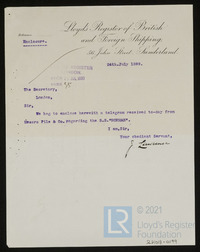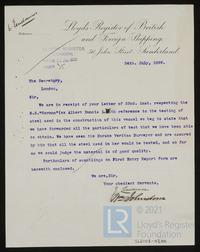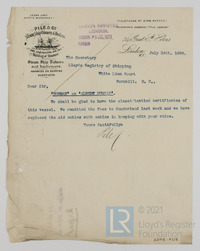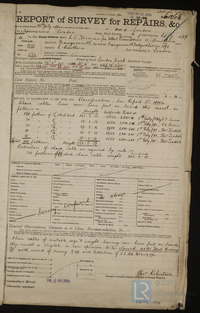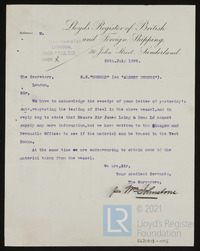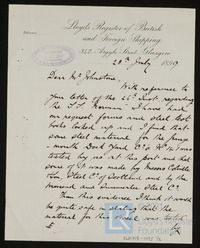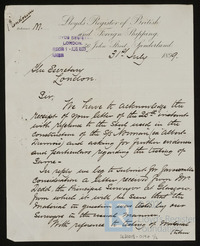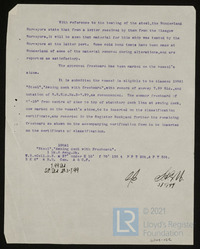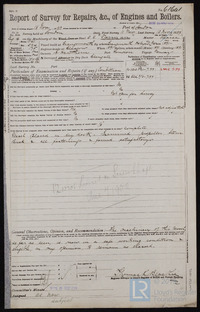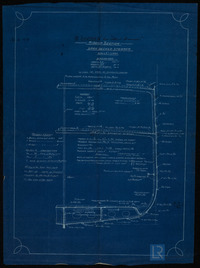- Related documents Related
- Full details Details
- Report document? Report?
Use the data export button to extract customised data sets from the Ship Plan and Survey Report Collection. Available in TSV and CSV formats.
Date recorded as the time of writing.
14/07/1899
The year in which a vessel’s construction is completed.
1891
The port or place in which the vessel’s construction took place, at the time of writing.
Grangemouth
Previously referred to as signal letters (c.19th C), radio call signs enable a ship to communicate and are assigned by the International Telecommunications Union (ITU).
RGMP
The port in which a vessel is registered or permanently based.
London
The individual and/or organisation listed
Charles Henry Pile
Name of the individual/entity/organisation responsible for authoring the record
H C A; C H S W
Broad categories and subdivisions of vessels related to their purpose or function.
Screw Steamer
A vessel’s means of propulsion.
Steam
Is the steamer assisted by sail?
No
Type and configuration of the engine(s) supplied for a vessel.
Triple Expansion
Date in which construction of a vessel’s engines were completed.
1891
Confirmation as to whether the vessel was equipped with refrigeration machinery to aid in the transport of frozen or chilled cargo/goods.
No
Does the vessel possess an auxiliary power source?
No
Is electric lighting fitted to the vessel?
No
Physical extent of a record.
1
Name of ship as recorded on the record
Norman
The individual and/or organisation listed as having been responsible for constructing the vessel. This can/may be the same as the owner and/or manager.
Grangemouth Dock Yard & Co
A unique number allocated to a specific vessel by an official registration authority of the country of registry (flag) that the vessel belongs to (post. 1855).
110158
Official administrative title (often printed) of a record used by Lloyd’s Register or external organisations.
GR130 Vessels of 100 tons & upwards
Records that constitute Lloyd’s Register’s first official encounters with a specific vessel, e.g. a survey report.
N
An officially licensed mariner (post 1850) holding ultimate command and responsibility for a vessel.
Frank May Hutt
Location where the document is written.
London
Physical arrangement of a ship’s masts, sails and rigging.
Sr - Schooner
Predominant material(s) utilised in a vessel’s construction.
Steel
A ship’s total internal volume in ‘register tons’ (replaced by gross tonnage post 1982).
1041
Location of construction for a vessel’s engines.
Glasgow
Dunsmuir & Jackson
Is machinery fitted at the aft of the vessel?
No
Generally a smaller additional auxiliary boiler (often used while the vessel is at port).
No
Name of the Proving House responsible for the public testing and certification of a vessel’s anchors and/or chain cables.
No
Report an issue with this document
Have you noticed missing or incorrect data or images for this document?
Please let us know and we will rectify the issue as soon as possible.

